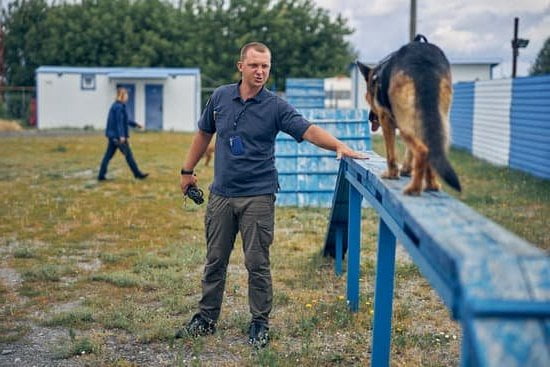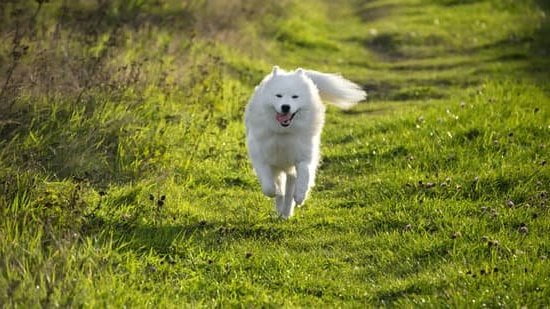Training your dog to come off leash is a crucial skill that can provide both safety and freedom for your furry friend. Being able to trust your dog’s recall command allows them to explore and enjoy their environment while still being under your control. In this comprehensive guide, we will take you through the process of teaching your dog to come off leash, from understanding the basics of recall training to troubleshooting common challenges along the way.
One of the main reasons why training your dog to come off leash is so important is for their safety. Whether you’re at home or out on an adventure, having a reliable recall command can prevent dangerous situations such as running into traffic or getting lost in unfamiliar surroundings. It also gives you peace of mind knowing that you have control over your dog’s actions and can keep them away from potential hazards.
Beyond safety, training your dog to come off leash also provides them with a sense of freedom. Dogs are naturally curious creatures who love exploring their surroundings. By teaching them a solid recall command, you give them the opportunity to roam and enjoy their environment while still maintaining control. This not only enriches their lives but also strengthens the bond between you and your furry companion.
In order to successfully train your dog to come off leash, it is essential to establish a strong bond and communication with them. Understanding what motivates your dog and using positive reinforcement techniques like treats and praise can greatly enhance their learning experience. Additionally, creating an enriching environment at home and in different locations helps reinforce their training and prepares them for real-world scenarios.
In the following sections, we will delve into the step-by-step process of training your dog to come off leash, starting with understanding the basics of recall training and creating an enriching environment for training sessions.
We will then cover how to teach your dog a solid recall command, build a strong training framework with essential commands and skills, prepare them for distractions and temptations, troubleshoot common challenges, ensure their safety during off-leash adventures, and finally, emphasize the importance of practice and patience for long-term success.
So let’s get started on this exciting journey towards achieving freedom and trust through off-leash training.
Understanding the Basics
The first and most important step in training your dog to come off leash is to understand the basics of recall training. Recall training is essential for the safety and freedom of both you and your dog. When your dog comes when called, it allows you to have control over their movements, which can prevent accidents or dangerous situations. Additionally, off-leash freedom allows your dog to explore and enjoy their environment more fully.
To effectively train your dog to come off leash, it is crucial to determine what motivates them. Every dog is different, so it’s important to find out what rewards or incentives work best for your furry friend. Some dogs are highly food motivated, while others may respond better to praise or toys. Understanding your dog’s motivators will make the training process more successful.
Building a strong bond and communication with your dog is another key aspect of recall training. Dogs are social animals that thrive on human interaction and connection. By establishing a strong bond with your furry friend, they will be more likely to listen and respond when called. Spend quality time together, engage in play sessions, and provide consistent positive reinforcement to strengthen your relationship.
| Statistic | Data |
|---|---|
| Percentage of lost dogs with no identification found by owners | Only about 22%* |
| Percentage of dog-related accidents involving unleashed dogs | More than 50%** |
| Average lifespan of a leashed vs unleashed dog | 10-13 years vs 1-3 years*** |
By understanding the basics of recall training, you are laying a solid foundation for successful off-leash training. In the next section, we will discuss how to create an enriching environment that supports your dog’s training journey.
Creating an Enriching Environment
Puppy-Proofing Your House for a Stress-Free Training Experience
Before you begin training your dog to come off leash, it is essential to create a safe and secure environment for both you and your furry friend. Puppy-proofing your house is an important step in ensuring a stress-free training experience. Remove any items that could pose a danger to your dog, such as toxic plants, small objects that could be swallowed, or electrical cords that may be chewed on.
Designate a specific area in your home where training sessions will take place, free from distractions and potential hazards. Use baby gates or barriers to prevent your puppy from accessing forbidden rooms or areas. This will help your dog focus solely on the training exercises and create a controlled environment for learning.
Setting Up a Safe and Stimulating Outdoor Space
In addition to preparing your home, it is equally important to set up a safe and stimulating outdoor space for off-leash training sessions. Ensure that your yard is securely fenced with no escape routes for your dog. A tall fence or an enclosed area will give you peace of mind and prevent your dog from wandering off during training.
Provide plenty of toys, interactive games, and mental stimulation activities in the outdoor space to keep your dog engaged. Having interesting things to explore and interact with will make the experience enjoyable for your furry friend, increasing their motivation during training sessions.
Importance of Practicing in Different Locations for Generalization
To prepare your dog for off-leash adventures beyond the confines of your own home, it is crucial to practice recall training in various locations. Dogs are contextual learners, so practicing the recall command in different environments helps them generalize the skill.
Start by gradually expanding the training area within familiar spaces, such as different rooms in the house or various spots in the backyard. Once your dog consistently responds to the recall cue in those areas, begin introducing new environments with different levels of distractions.
Practice at local parks, quiet streets, or even empty parking lots where your dog can experience novel sights, sounds, and smells. By exposing your dog to a range of scenarios, you will enhance their ability to focus on you and come when called regardless of the environment.
Laying the Foundation
Selecting the appropriate recall cue
When teaching your dog a solid recall command, it is crucial to choose the right recall cue. This cue will serve as a signal for your dog to come back to you obediently. The recall cue should be short, simple, and easy to remember.
Avoid using common words that may cause confusion, such as “come” or “here,” as they are often used in everyday conversation. Instead, opt for a unique word or phrase that is not commonly used in your household.
Starting with on-leash training and gradually progressing to off-leash
To lay a strong foundation for off-leash training, start by practicing the recall command on a leash in a secure and familiar environment. Begin by calling your dog’s name followed by the chosen recall cue. Use an excited and enthusiastic tone of voice to encourage their response. When your dog comes back to you, reward them immediately with treats and praise.
As your dog becomes more reliable with the recall command on-leash, gradually introduce longer leashes or extendable leashes to increase their freedom of movement while still maintaining control. Once your dog consistently responds to the recall command while on a long leash, you can then progress to off-leash training in a safe and enclosed area.
Using positive reinforcement techniques such as treats and praise
Positive reinforcement is key when teaching your dog a solid recall command. Whenever your dog responds correctly to the recall cue, reward them immediately with treats, affectionate praise, or even playtime with their favorite toy. Make sure the rewards are highly motivating for your dog so that they are eager to repeat the behavior.
Consistency is crucial during this stage of training. Every time you call your dog using the recall command, ensure that they return promptly before receiving the reward. It is essential not to punish or scold your dog if they do not come immediately, as this can create fear or hesitation. Instead, focus on reinforcing the desired behavior and gradually increasing the criteria for success.
By selecting the appropriate recall cue, starting with on-leash training, and using positive reinforcement techniques, you are laying a solid foundation for teaching your dog a reliable recall command. This foundation will form the basis for successful off-leash training in the future.
Essential Commands and Skills
In order to successfully train your dog to come off leash, it is important to establish a strong training framework that includes teaching essential commands and skills. These commands not only contribute to your dog’s overall obedience, but they also play a crucial role in ensuring their safety and well-being when off leash. Here are some key commands and skills that you should focus on during the training process:
- Teaching your dog to stay and wait patiently: The command “stay” is essential for keeping your dog in one place until you give them permission to move. This is particularly important in situations where you need your dog to remain still, such as when crossing a road or approaching a potentially dangerous situation. Similarly, teaching your dog to wait patiently involves instructing them not to move forward until you give them the signal.
- Developing reliable obedience with commands like sit, down, and leave it: Alongside recall training, it is crucial for your dog to understand basic obedience commands such as “sit,” “down,” and “leave it.” These commands can be helpful in managing your dog’s behavior in various situations.
For example, asking your dog to sit or lie down can keep them from approaching other dogs or people without permission. The “leave it” command teaches your dog to ignore something that may be tempting but potentially harmful. - Tips for leash walking and loose leash training: While this section focuses primarily on off-leash training, mastering leash walking is an essential part of building a strong training framework. Teaching your dog proper walking manners includes walking calmly beside you without pulling on the leash. Using positive reinforcement techniques such as treats and praise can encourage desired behaviors while discouraging pulling or lunging.
By incorporating these essential commands and skills into your training framework, you will be setting a solid foundation for successful off-leash training. Remember to be patient with your furry friend during the learning process and celebrate small victories along the way. Consistency and ongoing practice are key to maintaining a well-trained off-leash dog.
Distraction and Temptation Training
Distraction and temptation training is a crucial step in training your dog to come off leash. This type of training helps prepare your dog for real-world scenarios and ensures that they will respond to your recall command even when faced with distractions or temptations. By gradually introducing distractions and utilizing desensitization techniques, you can help your dog maintain focus and obedience in any situation.
One important aspect of distraction and temptation training is gradually introducing distractions. Start with low-level distractions, such as toys or mild noises, and gradually increase the difficulty level.
For example, if your dog has mastered the recall command indoors, you can start practicing it outdoors where there may be more distractions like squirrels or other dogs. By exposing your dog to different stimuli in controlled environments, they will learn to remain focused on you and respond to your recall command despite the distractions.
In addition to gradually introducing distractions, desensitization techniques can also be helpful in preparing your dog for real-world scenarios. Desensitization involves exposing your dog to a specific distraction in a controlled manner until they are no longer reactive or bothered by it.
For example, if your dog becomes overly excited when they see another dog while off leash, you can gradually expose them to other dogs from a distance, rewarding them for remaining calm and focused on you. Over time, this will help them become more comfortable around other dogs and less likely to be distracted when off leash.
It’s important to reinforce the recall command amidst distractions during training sessions. Use high-value rewards like treats or toys when practicing in distracting environments so that your dog associates responding to the recall command with positive outcomes. Consistency is key during distraction and temptation training – make sure to always reward your dog for coming when called, even if they were initially distracted.
In summary, distraction and temptation training plays a vital role in preparing your dog for real-world scenarios and ensuring their obedience off leash. By gradually introducing distractions, utilizing desensitization techniques, and reinforcing the recall command amidst distractions, you can help your dog maintain focus and respond to your command in any situation.
Remember to be patient and consistent during this training process, as it may take time for your dog to fully grasp and apply these skills. With practice and patience, you will be well on your way to achieving a well-trained off-leash dog.
Troubleshooting Common Challenges
Dealing with setbacks in off-leash training can be a frustrating but necessary part of the process. Understanding common challenges and having strategies to address them will help you overcome obstacles and improve your dog’s consistency in following the recall command. Let’s explore some of these common challenges and how to handle them effectively.
One common setback in off-leash training is fear or lack of motivation. Some dogs may become fearful when faced with new environments or distractions, making it difficult for them to come when called. In this case, it is important to gradually introduce your dog to new environments and distractions, starting with ones that are less intimidating. Using positive reinforcement techniques such as treats or praise can also help boost your dog’s motivation to come back to you.
Another challenge is reluctance from your dog to come when called consistently. This can happen if the recall command has not been properly reinforced during training sessions. To address this, it is important to maintain a consistent approach by using the same recall cue and reinforcing it with rewards each time your dog responds appropriately. It may also be helpful to practice recall training in different locations and gradually increase the level of difficulty.
If you find yourself struggling with these challenges despite your best efforts, seeking professional help might be a good option. Professional trainers have experience dealing with various behavior issues and can provide guidance tailored to your specific situation. They can assess any underlying factors contributing to the setbacks and provide further strategies or techniques to address them effectively.
Remember, setbacks are normal in off-leash training, especially considering the variety of real-world scenarios that dogs encounter. Stay patient and persistent throughout the process, using positive reinforcement techniques consistently. With time, practice, and patience, you can overcome these challenges and achieve a well-trained off-leash dog who follows your recall command reliably.
Safety Precautions for Off-Leash Adventures
When embarking on off-leash adventures with your dog, it is important to prioritize their safety and well-being. While enjoying the freedom and thrill of having your dog off leash, there are certain precautions you should take to ensure their protection.
First and foremost, it is essential to have proper identification for your dog in case they get separated from you during an off-leash outing. This can be achieved by microchipping your dog and attaching ID tags to their collar. A microchip is a small electronic device implanted under the skin that contains information about your contact details.
This enables shelters or vet clinics to scan the chip and locate the owner if the dog is found. Additionally, having visible ID tags with your phone number on them increases the chances of someone contacting you directly if they find your lost pet.
Before letting your dog off leash in public areas, it is crucial to consider various variables that may affect their safety. Evaluate the environment for any potential hazards such as busy roads, bodies of water, or areas with hazardous plants or wildlife.
Make sure the area is securely fenced or has proper boundaries to prevent your dog from wandering off into dangerous territory. Assess the overall suitability of the location based on factors like weather conditions, time of day, and the presence of other animals or people who may not be comfortable around dogs.
Responsible off-leash etiquette is also important for ensuring your dog’s well-being as well as maintaining positive relationships with others in public spaces. Always clean up after your dog by carrying poop bags with you and disposing of them properly in designated bins.
Respect other people’s comfort levels around dogs by keeping an eye on your pet’s behavior and promptly addressing any signs of aggression or discomfort towards strangers. Familiarize yourself with local regulations regarding dogs off leash in different areas to avoid any potential legal issues.
By following these safety precautions, you can enjoy stress-free off-leash adventures while keeping your furry friend happy, healthy, and safe. Remember that the partnership between you and your dog is built on trust, and ensuring their well-being during off-leash outings is an important element of that bond.
Practice and Patience
When it comes to training your dog to come off leash, practice and patience are essential. Consistency is key in ensuring that your dog understands and obeys the recall command reliably. It is important to remember that off-leash training is a process that takes time, effort, and dedication.
Daily reinforcement and ongoing practice are crucial in solidifying your dog’s understanding of the recall command. Set aside regular training sessions each day to practice off-leash exercises in a controlled environment. Start by practicing in a secure, familiar location such as your backyard before gradually introducing new environments with more distractions.
During these training sessions, use positive reinforcement techniques such as treats and praise to reward your dog for coming when called. By associating the recall command with pleasant experiences, you increase the likelihood of your dog responding attentively. Consistency in rewarding good behavior will help reinforce the recall behavior over time.
It is also important to celebrate small victories along the way and recognize your dog’s progress. Acknowledge even incremental improvements and offer praise or rewards accordingly. This positive reinforcement will motivate both you and your furry friend to continue working on their off-leash skills.
Remember that off-leash training requires a long-term commitment. Even after your dog becomes proficient at coming off leash, it is important to continue reinforcing this behavior regularly. Practice leads to mastery, so make sure to consistently devote time to refresh your dog’s recall abilities.
By maintaining consistency in training and patiently practicing in various environments, you can achieve the freedom and trust that comes with having a well-trained off-leash dog. The bond between you and your furry companion will strengthen as you work together toward successfully mastering this important skill.
Conclusion
Off-leash training is an essential aspect of responsible dog ownership and can provide both freedom and trust between you and your furry companion. Through the comprehensive guide outlined in this article, you have learned the importance of recall training, establishing a strong bond and communication, creating an enriching environment, laying a solid foundation, building essential commands and skills, preparing for distractions and temptations, troubleshooting common challenges, taking safety precautions, and the significance of practice and patience.
By successfully training your dog to come off leash, you are granting them the freedom to explore their surroundings while ensuring their safety. This newfound freedom allows your dog to enjoy their walks with a sense of independence while maintaining control over their behavior. It also promotes better physical exercise as they can roam more freely in safe areas.
Moreover, off-leash training develops a deep level of trust between you and your dog. When they consistently come back to you when called off leash, it demonstrates that they understand the expectation and are willing to obey your command. This trust is not only crucial for their safety but also for strengthening your bond with them.
Remember that achieving success in off-leash training requires consistency, patience, and ongoing practice. Celebrate small victories along the way as your dog becomes more reliable in their recall response. And even after reaching your goals, continue reinforcing these behaviors as dogs benefit from consistent reinforcement throughout their lives.
By dedicating yourself to the process of off-leash training, you can experience the joy of watching your furry friend run freely while remaining obedient by your side. The countless hours of practice will undoubtedly pay off when you see them happily trotting toward you every time you call their name. So take this journey together with your dog – build a strong foundation of trust through recall training – and enjoy a lifetime of adventures together.
Frequently Asked Questions
How do I teach my dog to be off the leash?
Teaching a dog to be off the leash requires consistent training and building trust between you and your dog. Start by practicing basic obedience commands such as sit, stay, and come in a controlled environment with a long leash. Gradually increase the distance between you and your dog while practicing these commands.
Reward your dog with treats or praise for successfully following the commands. As your dog becomes more reliable in obeying commands, you can start practicing off-leash in securely fenced areas or low-distraction environments. Always supervise your dog during off-leash sessions and gradually introduce new environments with higher distractions.
How do you train your dog to come back to you when off leash?
Training your dog to come back to you when off leash is crucial for their safety. Begin by reinforcing a strong recall command in controlled environments using positive reinforcement techniques. Use a clear and consistent verbal cue, such as “come” or “here,” combined with treats or rewards that are highly motivating for your dog.
Practice the recall command frequently during on-leash walks or within a securely fenced area, gradually increasing distances and distractions over time. It’s important to make coming back to you a positive experience for your dog, so avoid punishing or scolding them when they return after being called.
How do you transition to off leash?
Transitioning to off leash should only occur when you have built a strong foundation of obedience training and trust with your dog. Start by allowing short periods of off-leash time in securely enclosed areas where there are minimal distractions or potential hazards. Observe how well your dog responds to recall commands in this controlled environment before gradually expanding the off-leash boundaries into larger spaces with more distractions present.
Always prioritize safety by assessing the environment for any potential dangers like traffic or other animals that may pose a risk to your dog’s well-being. Remember that transitioning to off leash is an ongoing process that requires continued training, reinforcement of good behavior, and patience from both you and your furry friend!

Welcome to the blog! I am a professional dog trainer and have been working with dogs for many years. In this blog, I will be discussing various topics related to dog training, including tips, tricks, and advice. I hope you find this information helpful and informative. Thanks for reading!





